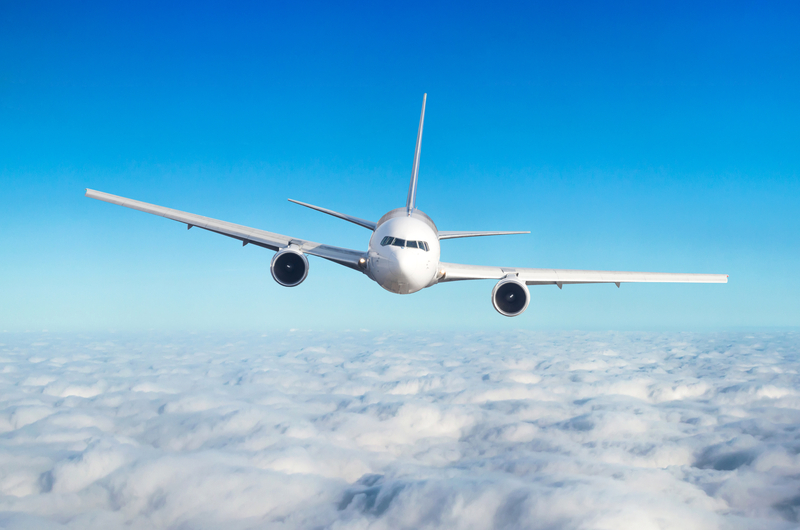Hold på hat og briller. Ifølge britiske forskere er turbulens steget med mere end 50 procent i de sidste 40 år, og meget tyder på, at turbulensen vil forværres yderligere i takt med den globale opvarmning. Turbulens er ubehageligt at flyve igennem – både for passagerer, stewardesser og piloter. Alene i USA anslås de årlige omkostninger ved skader på mennesker og fly at koste luftfartsindustrien over 200 millioner dollars. En ny undersøgelse lavet af fire forskere ved University of Reading i Storbritannien og udgivet i Geophysical Research viser, at turbulens i områder over Nordatlanten, som er en af verdens travleste flytrafikknudepunkter, er fordoblet på blot fire årtier fra 1979-2020. Forskerne analyserede klima- og atmosfæriske data fra 1979-2020 med det formål, at forstå hvordan det varmere klima påvirker klarluft-turbulens. Klarluft-turbulens kommer af det engelske udtryk, ”clear air turbulence” (CAT).
Det hidtil mest detaljerede billede af, hvordan turbulensmønstre har ændret sig
Ifølge undersøgelsen er antallet af timer med kraftig turbulens steget med 55 procent i et af områderne i Nordatlanten fra 1979-2020. I 1979 var der 17,7 timers alvorlig klarluft-turbulens på det undersøgte område over Nordatlanten, mens dette tal i 2020 var steget til 27,4 timer om året. De fire forskere har også kunne dokumentere en stigning i de mildere former af turbulens over samme område i Nordatlanten. Moderat turbulens er steget med 37 procent i antallet af timer i forhold til 1979, mens let turbulens har set en stigning på 17 procent i antallet af timer i forhold til 1979. Forskerne forventer, at klarluft-turbulens vil forværres yderligere i takt med den globale opvarmning.
Vidste du, at turbulens betragtes som alvorlig, når den får “løse genstande til at bevæge sig rundt i kabinen og forårsager korte perioder, hvor effektiv kontrol over flyet er umulig”, ifølge FAA. Turbulens betragtes som moderat, når løse genstande begynder at bevæge sig, og folk har svært ved at bevæge sig rundt i kabinen.
Klimaforandringerne intensiverer turbulensen
Til trods for at Nordatlanten har oplevet de største stigninger i turbulens, viser undersøgelsen, at andre travle flyruter over USA, Europa, Mellemøsten og Sydatlanten også har haft signifikante stigninger af kraftigere og hyppigere turbulens. Ifølge forskerne er der ingen tvivl om, at de store ændringer i perioden skyldes den varmere luft som følge af klimaforandringerne Varmere luft som følge af udledningen af drivhusgasser i atmosfæren ændrer luftstrømmene, hvilket forværrer turbulensen globalt. “Efter et årti med forskning, der viser, at klimaforandringerne vil øge klarluft-turbulens i fremtiden, har vi nu forskning, der beviser, at stigningen allerede er begyndt,” siger Paul Williams, en af forskerne fra University of Reading og medforfatter til undersøgelsen. “Vi bør investere i forbedrede turbulensprognoser og detektionssystemer for at forhindre, at den grovere luft omsættes til ujævnere flyvninger i de kommende årtier.” Netop sådanne investeringer kan hjælpe piloterne med at tilpasse flyrejsen, således flyet helt undgår de ujævne luftforhold.
Er turbulens farlig?
“Turbulens gør flyvninger ujævne og kan lejlighedsvis være farlige,” siger Mark Prosser, en forsker ved University of Reading, der ledede undersøgelsen. Klarluft-turbulens kan være særlig farlig, eftersom det i modsætning til turbulens under en storm er næsten umuligt for fjernmålingsværktøjer til luftfart at opfange. Det er også svært at forudsige, hvornår det rammer, fordi det skyldes små hvirvler og vindforskydninger, dvs. en pludselig ændring i vindens hastighed og retning. “Flyselskaber bliver nødt til at begynde at tænke over, hvordan de vil håndtere den øgede turbulens, da det koster industrien $ 150 til $ 500 millioner årligt alene i USA,” sagde Prosser. “Hvert ekstra minut, der bruges på at rejse gennem turbulens, øger slitagen på flyet samt risikoen for skader på passagerer og stewardesser.” Læs mere om turbulens i denne artikel.
